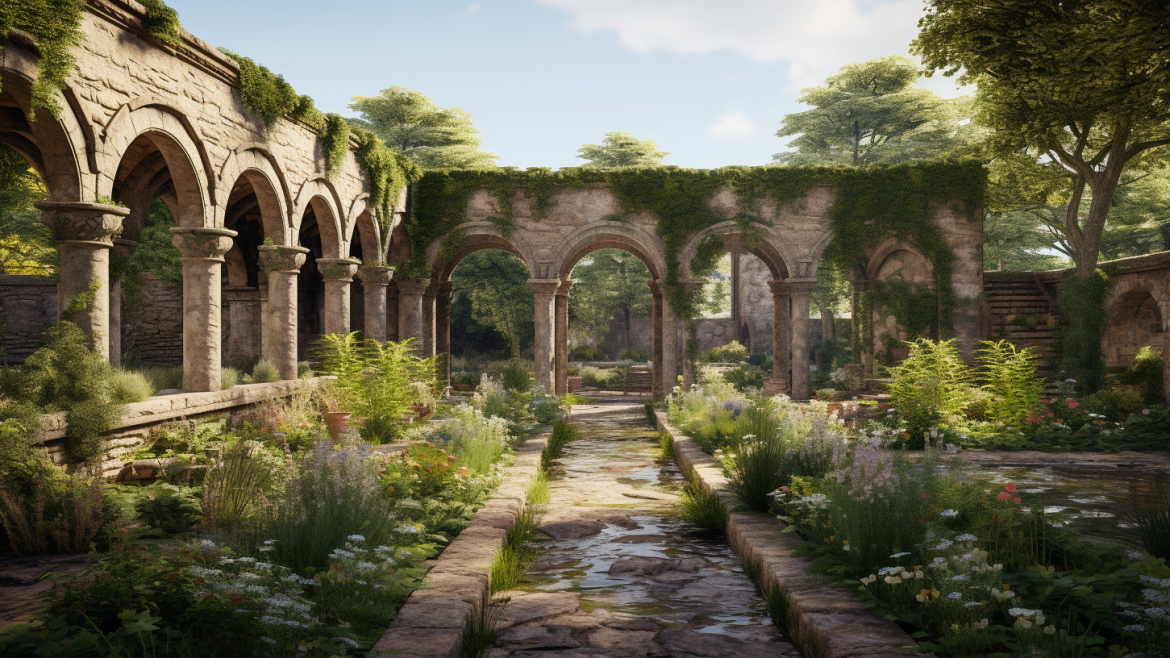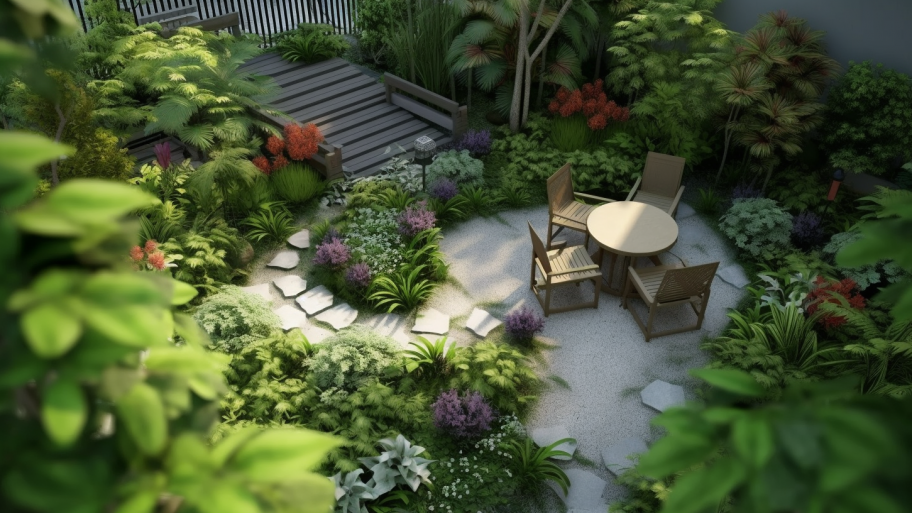The design of medieval gardens, particularly those found within monastic settings, was shaped by a combination of practical, spiritual, and aesthetic considerations. These gardens were carefully planned to provide sustenance, medicine, and a place for contemplation. Key aspects of medieval garden design included the use of walled enclosures, symmetrical layouts, raised beds, and water features, all contributing to an atmosphere of tranquility and purpose.1 2
Walled enclosures were a common feature in medieval gardens, serving both practical and symbolic purposes. High walls protected the gardens from wild animals, thieves, and harsh weather, while also creating a sense of separation from the outside world. This seclusion allowed the monks to focus on their spiritual and horticultural pursuits in peace.3 4
Symmetry was another important aspect of medieval garden design, reflecting a sense of order and balance. Gardens were often divided into quadrants, each containing a specific type of plant or serving a particular function. The central point of these quadrants was typically marked by a well, fountain, or other water feature, symbolizing life and purity. Walkways, often made of stone or gravel, connected the different sections of the garden and provided easy access for the monks to tend to the plants.5 6
Raised beds were commonly used in medieval gardens, providing numerous benefits. Elevated planting areas improved soil drainage, made it easier for the monks to work with the plants, and protected the plants from pests and diseases. These beds were typically bordered by woven wattle fencing or low stone walls, creating a visually appealing and structured appearance.7
Water features, such as wells, fountains, and ponds, played a crucial role in medieval gardens. They provided a reliable source of water for irrigation, cleaning, and, in some cases, fish farming. The soothing sound of flowing water also added to the peaceful atmosphere of the garden, fostering an environment conducive to meditation and reflection.8
For those interested in incorporating plants from medieval gardens into their modern landscapes, here are a few examples that can be easily grown and maintained:
- Lavender (Lavandula spp.) – Aromatic and attractive, lavender is prized for its essential oils and ability to attract pollinators.
- Borage (Borago officinalis) – Known for its edible flowers and cucumber-like flavor, borage is a versatile herb that can be used in salads, teas, and other dishes.
- Feverfew (Tanacetum parthenium) – With its delicate, daisy-like flowers, feverfew has a long history of medicinal use for treating migraines, inflammation, and other ailments.
- Lemon balm (Melissa officinalis) – A member of the mint family, lemon balm is known for its calming properties and citrusy scent, making it a popular herb for teas and aromatherapy.
To further enhance your medieval-inspired garden, consider these Amazon products that are not books, plants, or seeds:
- Solar Water Fountain – A solar-powered water fountain can serve as a sustainable and eye-catching centerpiece in your garden, creating a soothing atmosphere reminiscent of medieval monastic gardens.
- Wrought Iron Garden Bench – A classic wrought iron bench provides a comfortable and elegant seating area for relaxation and contemplation in your garden.
- Decorative Garden Obelisk – A garden obelisk can serve as a focal point in your garden while also providing support for climbing plants, such as roses or ivy, adding height and structure to your medieval-inspired landscape.
In conclusion, medieval garden design offers valuable inspiration for creating purposeful, tranquil, and visually appealing gardens today. By incorporating key design elements such as walled enclosures, symmetry, raised beds, and water features, as well as a variety of plants with culinary and medicinal uses, modern gardeners can enjoy a touch of medieval serenity in their own outdoor spaces. So, as you delve into the world of medieval gardens, don’t forget to explore other ancient gardening traditions, like those from the Indus Valley or ancient China, for more ideas and inspiration.




